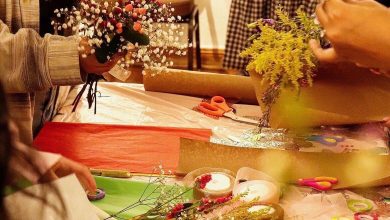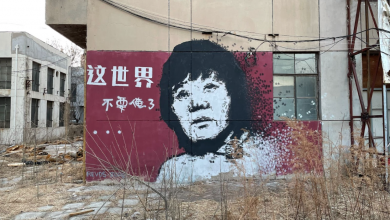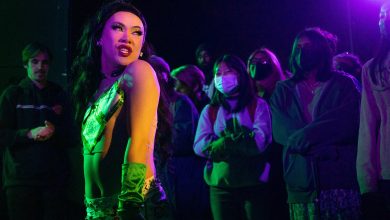Editor’s Note (Winter 2012)
I’m embarrassed to admit that, every year, I’ve approached March’s designation as Women’s History Month with an eye roll. In the past, it’s meant listening to the stories that most of us already know – Joan of Arc was burned at the stake for heresy after leading the French army against the British, Madame Curie was the first woman to win the Nobel Prize in science and Cleopatra was the last Pharaoh of Egypt. As such, this “celebration” of women has seemed more like an excuse for society to feel a little better about the fact that every history class ought to be called “Men’s History.” Last month, however, proved to be very different. Somehow, out of seemingly nowhere, I learned about more amazing women than I could have ever imagined existed:
The Mercury 13: This refers to the 13 women who trained to be astronauts as a part of a private program in 1959, at the same time as the seven men (the Mercury Seven) who took part in NASA’s official astronaut program. Though NASA refused to believe that women could take part in such a rigorous training, one of the men who helped create the government’s program believed that women were better suited for space because of their smaller height and weight. Jerrie Cobb (pictured above) became the first woman to join the program, quickly followed by Myrtle Cagle, Janet Dietrich, Marion Dietrich, Wally Funk, Sarah Gorelick, Janey Hart, Jean Hixson, Rhea Hurrie, Gene Nora, Irene Leverton, Jerri Sloan and Bernice Steadman. Though these women proved that they could pass all of the tests, none of the Mercury 13 ever reached space. Almost 25 years later, in 1983, Sally Ride became the first American woman to do so.
Claude Cahun (born Lucy Schwob): Cahun was a French artist, photographer and writer who enjoyed playing with gender and sexuality in her work. Cahun and her partner, Marcel Moore (born Suzanne Malherbe) collaborated on numerous pieces as they became known in the art world for the artists’ salons they held at their home (attracting the likes of Henri Michaux and Sylvia Beach). Cahun and Moore, resistance workers during World War II, were jailed by the Nazis and sentenced to death in 1944. Though they survived the war and were freed by the Allies, Cahun suffered from poor health and died in 1954. Remembered for her work with identity, role reversal and gender bending, Cahun’s name has been mostly forgotten outside of the art world.
Jane Addams: In 1889, Addams founded the Hull House in Chicago – a settlement house that served those in need as it empowered women and men working to improve the opportunities available to working class people. She also fought for suffrage, became the first American woman to win the Nobel Peace Prize and was named the “most dangerous woman in America” by J. Edgar Hoover.
Shirley Chisholm: The first African American woman elected to Congress, Chisholm was also the first African American major-party candidate for President of the United States and the first woman to run for the Democratic presidential nomination. During her time in Congress from 1969 to 1983, she opposed the draft, supported legislation to increase spending in education and healthcare, and worked to improve the conditions of Haitian refugees.
Mildred McAfee: The first female commissioned officer in the U.S. Navy, McAfee is best known as the first director of the WAVES (“Women Accepted for Volunteer Emergency Services”), a division of the Navy that started during World War II and consisted only of women. The group came about after Eleanor Roosevelt lobbied Congress into letting women serve.
The purpose of sharing these women’s stories is to point out how important it is to continue learning about the amazing women who have helped shape our society. This probably sounds obvious, but it’s easy to forget about the women who are so rarely mentioned in history. Laurel Thatcher Ulrich was right when she wrote that “well-behaved women seldom make history.” But even so, those who have done pretty kick ass things get lost as curricula stick to the ‘classic’ men who are assumed to be more important. So even though March is over, let’s all promise to pay better attention to those who deserve recognition. After all, history classes of the future don’t need to consist entirely of men’s history. Instead, they can be our history inclusive of all genders, sexualities, races, ethnicities and classes.
– Melissa van Gelder, Editor in Chief
This article originally ran in the Winter 2012 issue of Fem.





With all due respect, I hope that in the near future you learn about Brown women and their amazing struggles…and the work that they are doing/have done. Sadly they dont get as much credit as they should.
Peace.
With all due respect, I hope that in the near future you learn about Brown women and their amazing struggles…and the work that they are doing/have done. Sadly they dont get as much credit as they should.
Peace.
I completely agree – there are women of every race and ethnicity who have done absolutely amazing things and don’t get nearly as much credit as they deserve (if they get any at all). The women I highlighted in my editor’s note are women I happened upon as I was visiting museums in Chicago and San Francisco over Spring Break. And I definitely think there is something to be said about the fact that all but one are white, as these were the women that these museums chose to spotlight. Unfortunately, because of space constraints in the print issue, there was not enough room to write more about this (this is the exact version that ran in the issue, minus the notes about the pictures). If you would like to submit a piece about women you believe deserve highlighting, please let me know.